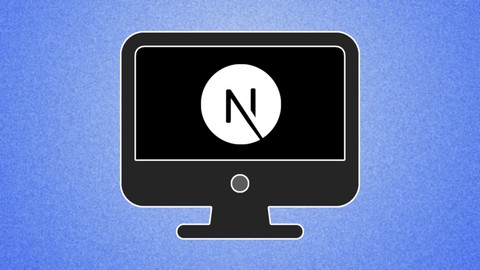Next.js by Example - Develop static websites and full-stack web apps with React, Next.js, and Tailwind CSS
PREVIEW THIS COURSE - GET COUPON CODE
Description
Update: this course is being updated to cover the new App Router functionality, made stable in Next.js v13.4 in May 2023.
It currently contains about 4 hours of content on the new App Router, covering all the features compatible with using Next.js as a Static Site Generator. The remaining 8 hours cover the older Pages Router functionality.
Described as “The React Framework for Production”, Next.js makes it easy to build highly optimized web applications in React.
This course will guide you through learning Next.js by developing two examples: a fully static website, and a hybrid (static + server-side rendered) app.
The first example, a personal blog website, will introduce you to fundamental Next.js concepts such as pre-rendering, file-system based routing, and hydration.
It will show you how to load data in pages that are statically generated at build time, and how to style your pages in global CSS files or with the styled-jsx library that provides component-scoped styles.
The Deployment section will present you all the options for running your application in production, from fully-managed serverless platforms like Vercel to configuring your own Linux servers.
The second example you will develop is a shop website. This will be a more complex application that loads its data from a Headless CMS (Strapi) and uses advanced Next.js features such as Incremental Static Regeneration to automatically reflect changes in the backend data.
It will show you how to enable TypeScript support in a Next.js project if you wish to do so. Using TypeScript is optional; all but one of the videos use plain JavaScript. But you will find the full TypeScript code for the shop example in a GitHub repository if you prefer TypeScript.
The website will use the popular Tailwind CSS library for styling, and the Next Image component for image optimization.
You will see different ways to load data from an external API, including writing your own API routes in Next.js, and how to choose the best approach for your specific requirements.
The example will include a secure authentication system based on JWT and cookies, and the React Query library will be used for caching data on the client side.
The full source code for all examples is provided, with an easy way to see the changes made in every lecture.
The course can be followed with the latest Next.js 13, however it does not yet cover the new App Router functionality.
Who this course is for:
React/Web developers who want to build static or hybrid (static + SSR) web apps with Next·js
